How to Build a Home Studio for Computer Based Music Recording
Method 1 of 2:
Building a Home Studio
-
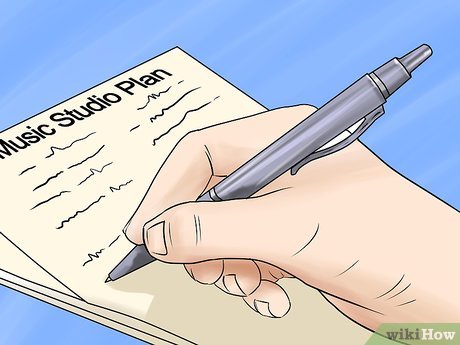 Write a plan of what you want to do. Do you want to build a recording studio? Is it a singing booth? Is it an engineering booth? Is it for computer-based music production? Knowing what you want before you start can help you decide which equipment you will need. Doing extensive research will help at this stage. Try to find a specialist at PC World, or your local Apple shop, take notes and then find more information on the Internet.
Write a plan of what you want to do. Do you want to build a recording studio? Is it a singing booth? Is it an engineering booth? Is it for computer-based music production? Knowing what you want before you start can help you decide which equipment you will need. Doing extensive research will help at this stage. Try to find a specialist at PC World, or your local Apple shop, take notes and then find more information on the Internet. -
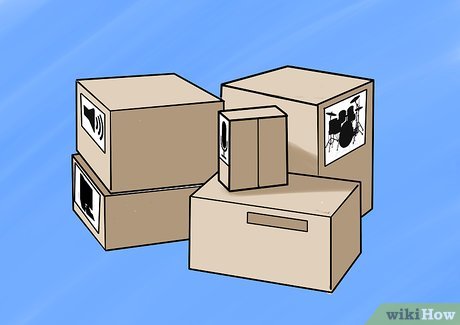 Acquire the appropriate equipment. This will include such items as amplifiers, microphones, mixers, electric instruments, cables for connecting it all together. A modern computer built or purchased within the past three years should be sufficient.
Acquire the appropriate equipment. This will include such items as amplifiers, microphones, mixers, electric instruments, cables for connecting it all together. A modern computer built or purchased within the past three years should be sufficient.- If possible, acquire a working high-quality soundcard, such as an M-Audio Fast Track Pro or Digidesign Mbox 2 Mini. Creative Labs does have a Pro Music line called EMU. A 1212M PCI system is ideal if you were going to go that route.
- Monitor speakers are helpful if you are looking to stick with this for more than a hobby. The M-Audio Studiophile BX8a's, KRK RP-8 Rokit work well, and if you've got money to burn, the Mackie HR824 Studio Monitors.
- If you're into hip-hop, techno, or dance music, a set of turntables will be needed to record your sets or scratches on the fly. You can also use DJ software such as Traktor or Serato and a USB DJ controller to try out your mixes.
- A midi keyboard will be useful if you want to use midi software (which you can use to write bass lines, piano parts, and drum beats). Nothing fancy is needed, but each person will have their own preference. There are many advantages to having a midi keyboard because it will give you the tactile feel of a real instrument, which can greatly aid creativity.
-
 Buy or download music-editing software for your PC. Pro Tools, Cubase, Reason, and FL Studio are popular brands for Windows while Logic is popular with Macs. Macs include a built in music-editing program called GarageBand. Garageband is great for beginners but it will be a good idea to upgrade to more advanced music production software such as Logic or Pro Tools to make more professional quality music.
Buy or download music-editing software for your PC. Pro Tools, Cubase, Reason, and FL Studio are popular brands for Windows while Logic is popular with Macs. Macs include a built in music-editing program called GarageBand. Garageband is great for beginners but it will be a good idea to upgrade to more advanced music production software such as Logic or Pro Tools to make more professional quality music. -
 Connect everything up. This is where most of the genius (and perspiration!) comes in. In general, keep it as simple as possible. For best playback quality run from the sound card into a mixer or amplifier and then to your monitor speakers. For best recording quality, run instruments/mics into a mixer(make sure you are getting a perfect signal) then run from the mixer into the sound card.
Connect everything up. This is where most of the genius (and perspiration!) comes in. In general, keep it as simple as possible. For best playback quality run from the sound card into a mixer or amplifier and then to your monitor speakers. For best recording quality, run instruments/mics into a mixer(make sure you are getting a perfect signal) then run from the mixer into the sound card. -
 Learn how to record a sound from an input line and how to arrange pre-recorded sounds. Also learn how to turn an arrangement into a .wav or .mp3 file. (After all, eventually we want to make a CD with all this awesome music!)
Learn how to record a sound from an input line and how to arrange pre-recorded sounds. Also learn how to turn an arrangement into a .wav or .mp3 file. (After all, eventually we want to make a CD with all this awesome music!) -
 Select a room in your house. Sound-proof it if possible. If not, try to use special carpet or insulation that can at least reduce external noise.
Select a room in your house. Sound-proof it if possible. If not, try to use special carpet or insulation that can at least reduce external noise. -
 Start writing simple tracks. Start off with a drumbeat. Add a bass line or piano or vocal track. Start mixing. Explore! It's all about experimentation. At the beginning, you don't have to write a masterpiece - just focus on having fun!
Start writing simple tracks. Start off with a drumbeat. Add a bass line or piano or vocal track. Start mixing. Explore! It's all about experimentation. At the beginning, you don't have to write a masterpiece - just focus on having fun! -
 If you have trouble with any of the above, pick up a Mixing / Studio Book. It will help you understand the underlying concepts needed to keep you going for a lifetime.
If you have trouble with any of the above, pick up a Mixing / Studio Book. It will help you understand the underlying concepts needed to keep you going for a lifetime. -
 Once you've learned the basics, start breaking it down. Lay a bunch of tracks together. Experiment with processed effects. Experiment with plugins, loops, new hardware and anything else you can get your hands onto.
Once you've learned the basics, start breaking it down. Lay a bunch of tracks together. Experiment with processed effects. Experiment with plugins, loops, new hardware and anything else you can get your hands onto.
Method 2 of 2:
Building a Basic Studio for Recording on a Budget
-
 Obtain a suitable computer, preferably a Mac. It must be installed in the room you want to create music.
Obtain a suitable computer, preferably a Mac. It must be installed in the room you want to create music. -
 Get an audio interface, mic and sound output. For a few hundred dollars or pounds, you can pick up the Focusrite Scarlett Studio, with a 2i2 interface, CM25 mic and HP60 headphones.
Get an audio interface, mic and sound output. For a few hundred dollars or pounds, you can pick up the Focusrite Scarlett Studio, with a 2i2 interface, CM25 mic and HP60 headphones. -
 Plug it in. The Scarlett Studio comes with all the cables included.
Plug it in. The Scarlett Studio comes with all the cables included. -
 Start your Digital Audio Workstation program. PCs are best with Cubase, Macs with GarageBand or Logic Pro X.
Start your Digital Audio Workstation program. PCs are best with Cubase, Macs with GarageBand or Logic Pro X. -
 Get a MIDI keyboard . Plug it in.
Get a MIDI keyboard . Plug it in. -
 You have a basic studio. Enjoy!
You have a basic studio. Enjoy!
4 ★ | 2 Vote
You should read it
- 6 notable differences between Mac Studio and Mac Pro
- Roblox Studio
- How to Start Creating Music
- Dell is about to release Studio XPS 15 and 17 inches
- How to install OBS Studio in Ubuntu
- 11 Best Music Making and Production Software
- Quickly download some useful software of Ashampoo which is being free for a short time
- Shortcuts in Camtasia Studio
May be interested
- Instructions on how to use Camtasia Studio from AZ
 instructions on how to use camtasia studio from az. camtasia studio is one of the most popular desktop recording software available today. compared to competitors such as mirillis action, bandicam, ... camtasia studio is more appreciated for quality.
instructions on how to use camtasia studio from az. camtasia studio is one of the most popular desktop recording software available today. compared to competitors such as mirillis action, bandicam, ... camtasia studio is more appreciated for quality. - How to install Camtasia Studio 9, 8 to record computer screen video
 camtasia studio is free screen recording and video editing software on computers. by installing camtasia studio 9.8, readers will easily use the software to record high-quality screen videos and share them on social networking sites such as facebook and youtube.
camtasia studio is free screen recording and video editing software on computers. by installing camtasia studio 9.8, readers will easily use the software to record high-quality screen videos and share them on social networking sites such as facebook and youtube. - Steps to install and setup Android Studio in Windows
 android studio is the official ide (integrated development environment) for android application development and it is based on jetbrains 'intellij idea software. android studio offers many great features that enhance productivity when building android apps.
android studio is the official ide (integrated development environment) for android application development and it is based on jetbrains 'intellij idea software. android studio offers many great features that enhance productivity when building android apps. - How to Record Voice on Computer
 this is an article showing how to use a windows computer to record sound from devices and external sounds. you can use a free app like audacity to capture sounds coming from your computer, such as those from your favorite music and video apps. if you want to record audio using your computer's microphone, you can use the voice recorder application available on all versions of windows. if you want to do advanced recording with multiple songs (such as for your band or music project), learn how to record songs with audacity.
this is an article showing how to use a windows computer to record sound from devices and external sounds. you can use a free app like audacity to capture sounds coming from your computer, such as those from your favorite music and video apps. if you want to record audio using your computer's microphone, you can use the voice recorder application available on all versions of windows. if you want to do advanced recording with multiple songs (such as for your band or music project), learn how to record songs with audacity. - Instructions on how to build a computer at home simply and quickly
 a detailed guide on how to build a home computer is simple and quick. building computers at home is not a simple matter if you do not have much experience.
a detailed guide on how to build a home computer is simple and quick. building computers at home is not a simple matter if you do not have much experience. - How to build Linux web server with an old computer
 if you are interested in building a home web server, the easiest way is to install linux on the backup computer. doing this is simple and gives you a logical way to host a website or blog.
if you are interested in building a home web server, the easiest way is to install linux on the backup computer. doing this is simple and gives you a logical way to host a website or blog. - This is what you missed on the first day of Microsoft Build 2017
 releasing the cortana skills kit, visual studio for mac, a new powerpoint plugin for instant translation and many innovations in cloud services, databases ...
releasing the cortana skills kit, visual studio for mac, a new powerpoint plugin for instant translation and many innovations in cloud services, databases ... - 11 Best Music Making and Production Software
 as technology continues to advance, creating music becomes a lot more open in terms of how we can do it. as opposed to needing four recorders, a microphone and a few devices back in the day, now we can just download some software on the computer,
as technology continues to advance, creating music becomes a lot more open in terms of how we can do it. as opposed to needing four recorders, a microphone and a few devices back in the day, now we can just download some software on the computer, - How to record on computer using Adobe Audition
 adobe audition is a highly regarded computer audio processing tool from users, supports high quality audio recording, audio file editing such as inserting, cutting out audio clips, adding effects, ... the software is easy to use even for those who have just stepped into this field, and now we will learn how to use adobe audition to perform audio recording on the computer.
adobe audition is a highly regarded computer audio processing tool from users, supports high quality audio recording, audio file editing such as inserting, cutting out audio clips, adding effects, ... the software is easy to use even for those who have just stepped into this field, and now we will learn how to use adobe audition to perform audio recording on the computer. - Record computer screen with OBS Studio, how to record laptop screen on OBS
 open broadcaster software (obs studio) is software that allows live streaming of images, sounds or screen video recording.
open broadcaster software (obs studio) is software that allows live streaming of images, sounds or screen video recording.
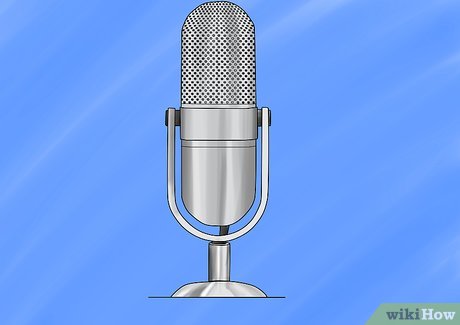
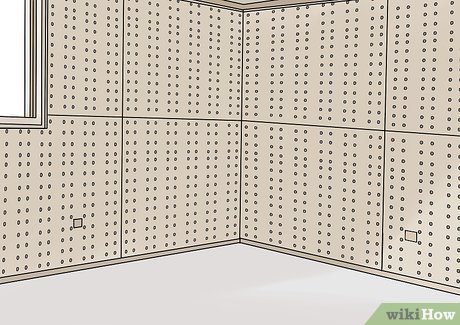
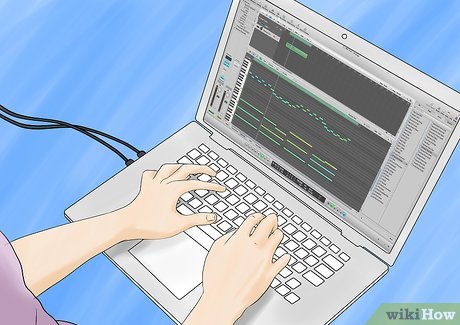
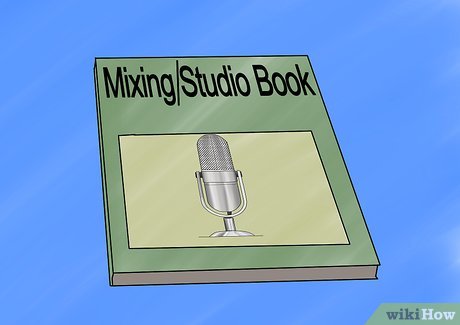
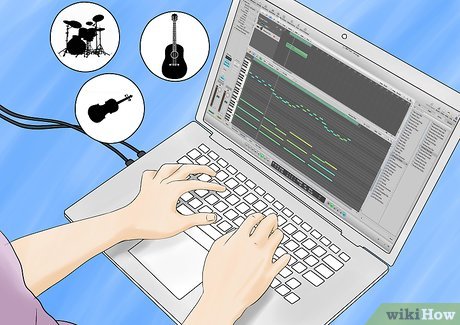
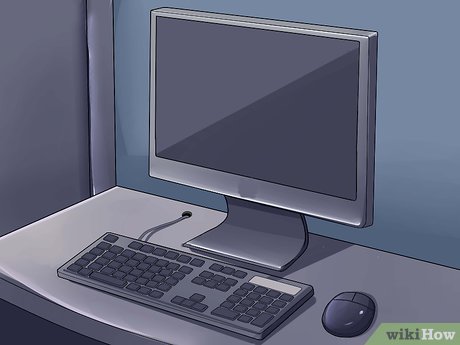
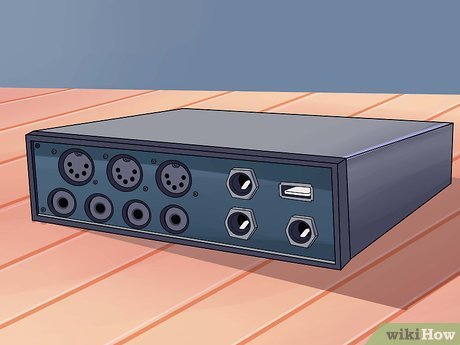
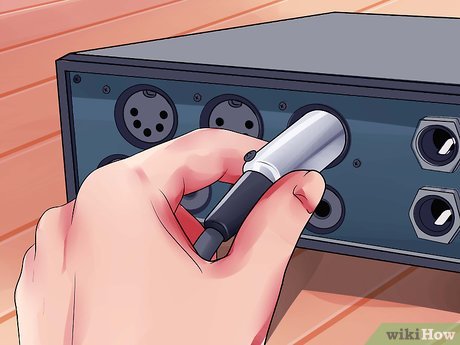
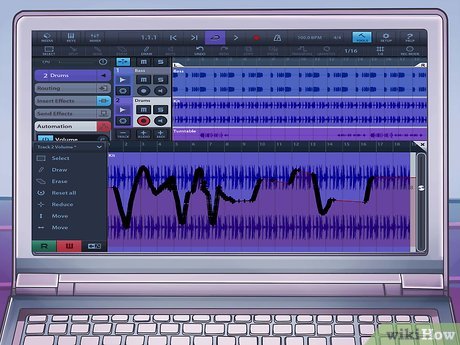
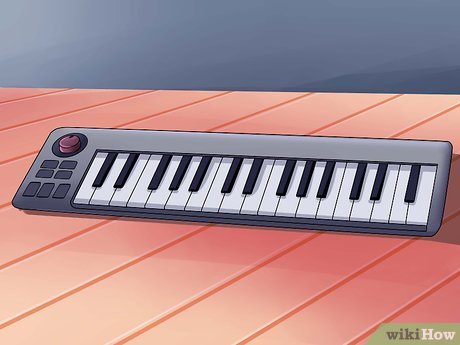
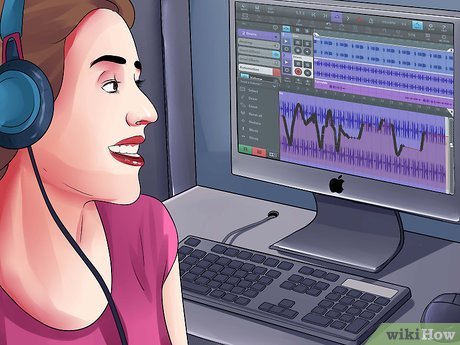










 How to Make Cosplay Costumes
How to Make Cosplay Costumes How to Blow Fire
How to Blow Fire How to Attend a Concert
How to Attend a Concert How to Prepare for and Enjoy an Amusement Park
How to Prepare for and Enjoy an Amusement Park How to Get Your Songs out There
How to Get Your Songs out There How to Have Fun at a Mall
How to Have Fun at a Mall